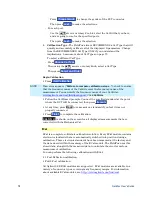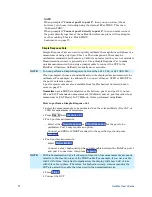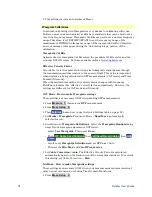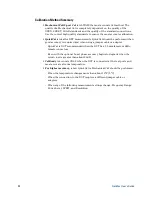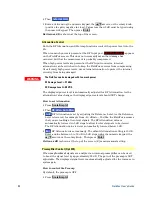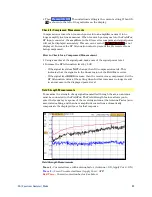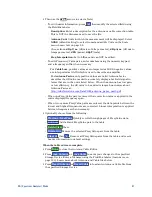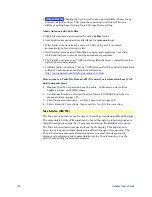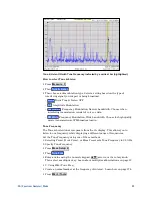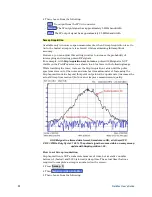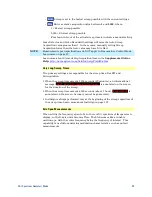
84
FieldFox User’s Guide
o
Then
Full Span
Selects the entire frequency span of the FieldFox. The
Center frequency is set automatically.
How to change frequency step size
When using the
▲|▼
arrows to change any of the frequency settings, the size of
the frequency step can be changed.
Press
Freq/Dist
Then
More
Then
CF Step Auto Man
o
Auto
Each press of the
▲|▼
arrows increments or decrements the value by
1/10
th
(one division) of the current frequency span.
Note:
To change this
setting from
Man
to
Auto
, press
CF Step
twice.
o
Man
Type a step size value using the numeric keypad, then select a
multiplier key. Learn about multiplier abbreviations on page 19.
Radio Standard
A Radio Standard is a collection of settings that are applied to the FieldFox for
specific RF protocols. When a Radio Standard is applied, the FieldFox frequency
and channel settings change to that of the standard.
By default, the FieldFox locates the center frequency of the standard in the
middle of the screen and sets the frequency span to cover all of the Uplink and
Downlink frequencies. The selected Radio Standard name appears in the center
of the screen below the X-axis.
After a Radio Standard has been selected, the frequency range can be changed by
selecting channel numbers rather than frequency. Learn how on page 85.
When a Channel Measurement is selected such as ACPR, other relevant settings
will be changed such as Integration BW. Learn more about Radio Standards and
Channel Measurements on page 114.
How to select a Radio Standard
Press
Measure 1
OR
Freq/Dist
then
More
Then
Radio Standard
Then select a standard using the
▲|▼
arrows or rotary knob and press
Enter
.
Custom Radio Standards
Your own custom Radio Standards can be imported into the FieldFox. Custom
standards are created in *.csv (spreadsheet) format.
A template and instructions for creating your custom Radio Standard is at:
http://na.tm.agilent.com/fieldfox/help/Reference/CustomRadioStandard.htm
Once imported, the *.csv file is stored in the FieldFox \User Data\ folder. The
custom Radio Standards are read and presented at the top of the list of internal
Radio Standards.

